
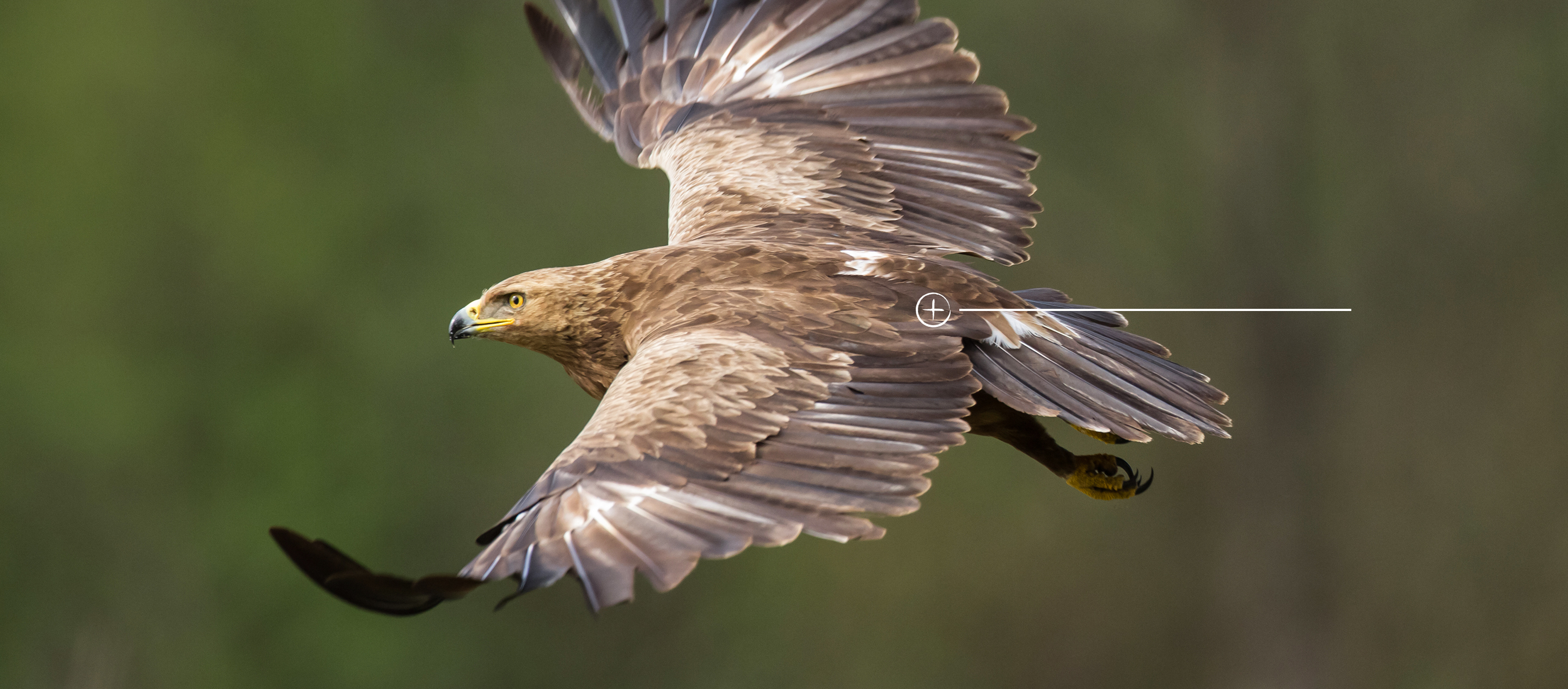
Appearance
Lesser spotted eagle (Clanga pomarina, previously Aquila pomarina) is medium sized dark brown eagle. It’s wing span can reach up to 1,5 meters. The wings are long and evenly broad, tips well “fingered”. It’s strong legs are covered with feathers up to the fingers.
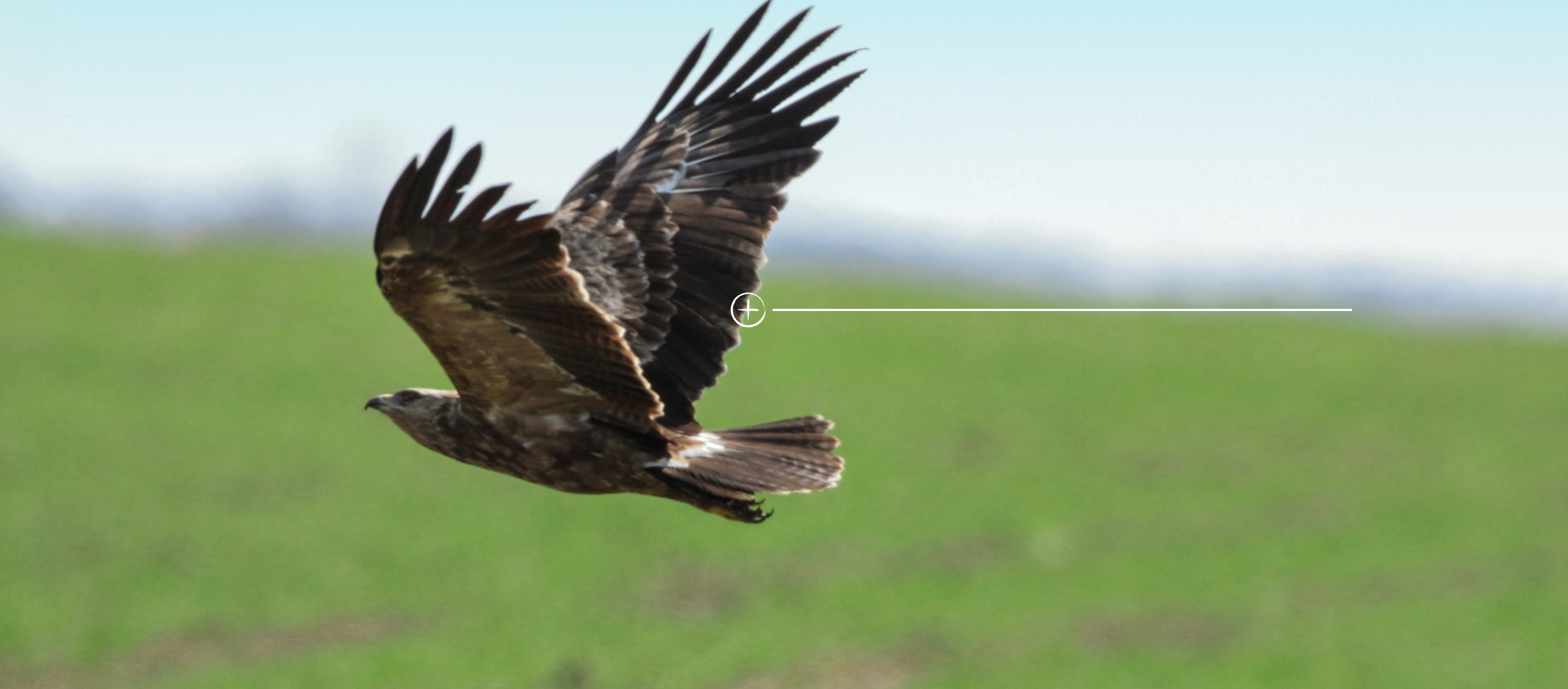
Lifestyle
Although it is one of the smallest eagles, the lesser spotted eagle is a majestic bird that can usually be observed calmly soaring above fields and plains. It reaches maturity around age of 3-4, and can live up to 20 years. Life of lesser spotted eagle is closely linked with humans and their activities as it is strongly affected by the way we manage our farmlands and meadows, and what we do in the forests. Lesser spotted eagle needs a mosaic of different land uses - a meadow, fallow lands and grasslands where to forage for food, and it needs a forest where to build a nest. It also needs separately growing trees, hay stacks, fences and poles where to sit and observe the potential prey.
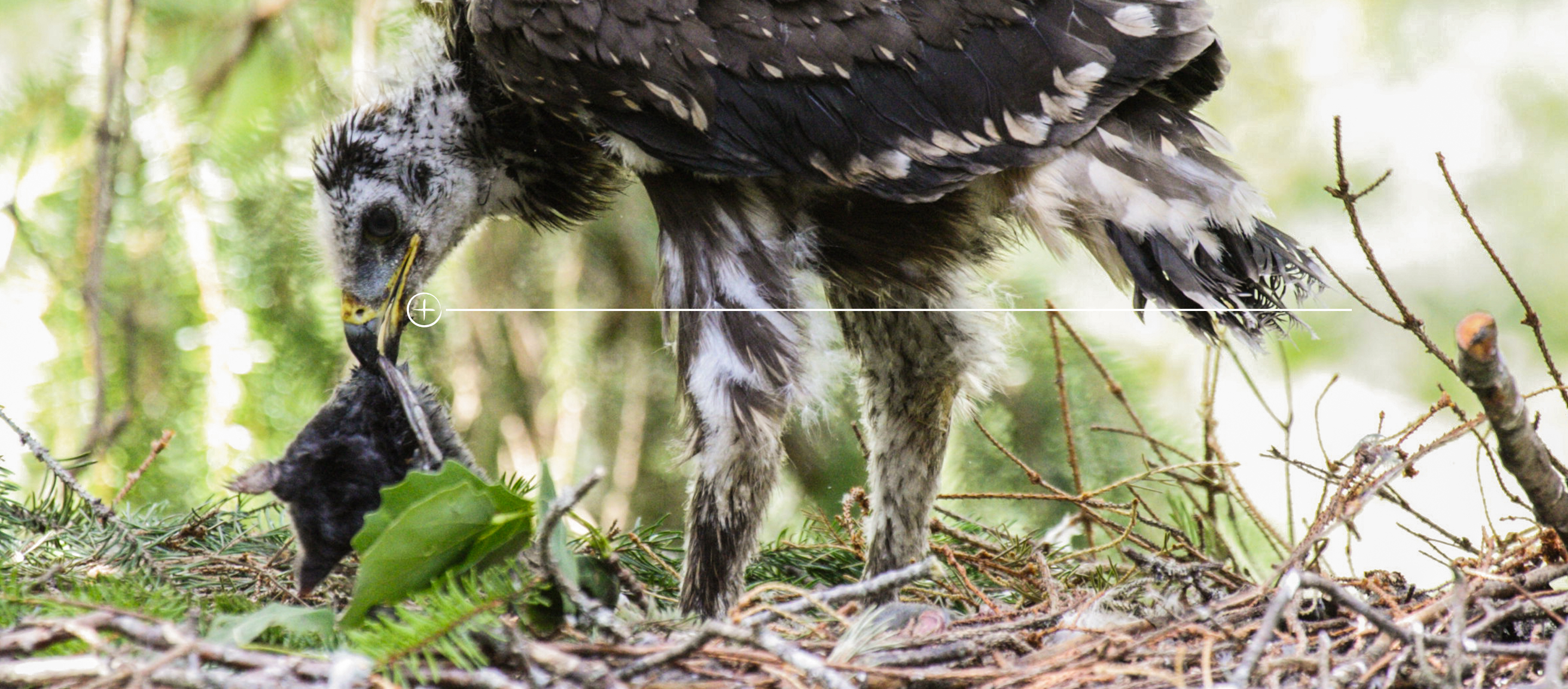
Foraging
Most often the lesser spotted eagle feeds on small rodents (mainly voles) and amphibians, but can prey as well on moles, insects, and - rarely - small birds.
Lesser spotted eagle forages in meadows, grasslands, fallow lands, and does it for the most of its active daytime. Most often it will forage in the range of one kilometer around the nest, therefore it is especially important that this area includes mowed meadows and small wetlands as a source of frogs. Lesser spotted eagle looks for the prey while soaring in the air or sitting in an elevated location - a separately growing tree or haystack, but it can also be seen foraging on the ground.
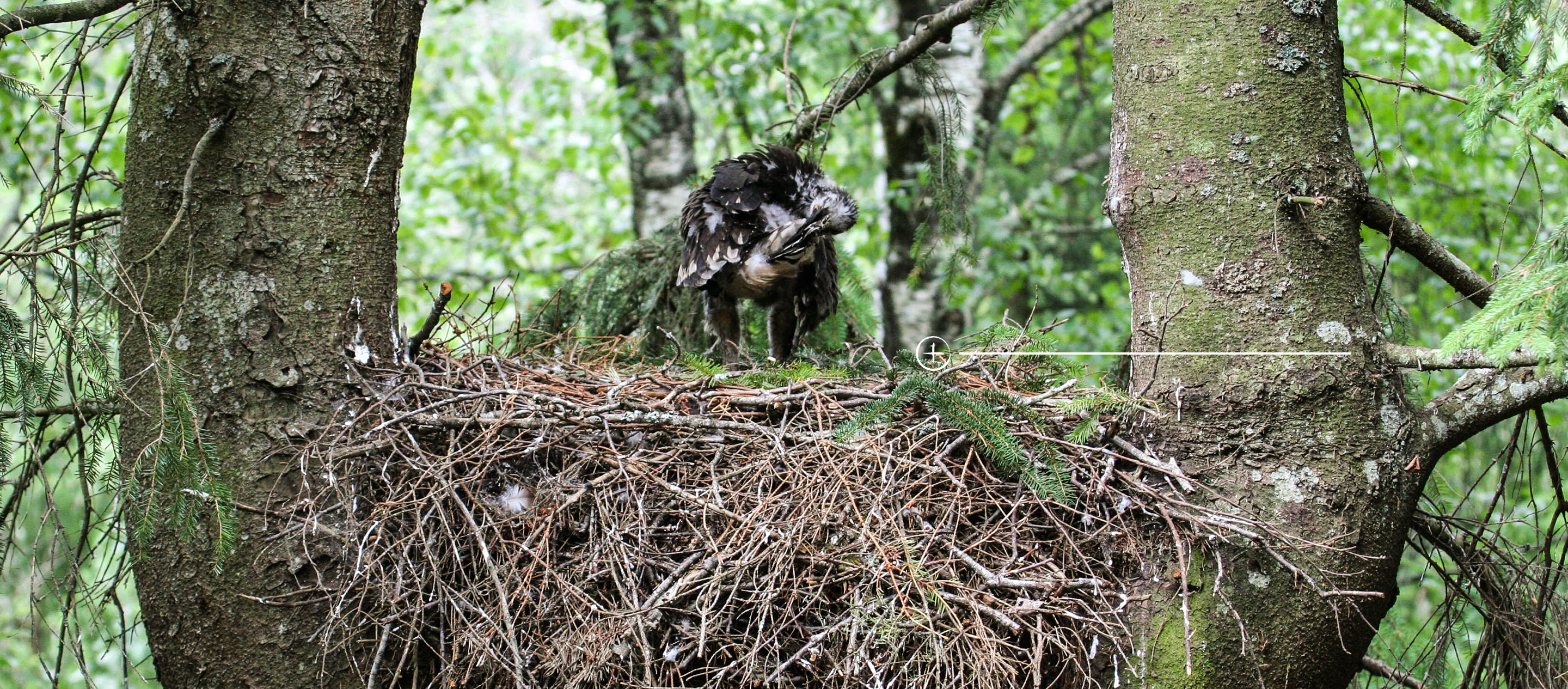
Breeding and habitat
Lesser spotted eagles breed in pairs, mostly remain monogamous and after spending the winter in Africa return to previous breeding places.
They make their nests in grown leaf and mixed forests with spruces, birches and aspens, and usually build the nests in close proximity to the edge of forest.
Lesser spotted eagles return to Latvia from Africa in the beginning of April. At the end of April the female lays one or two eggs - white with darker spots. After a little more than a month the chicks are hatched. If both eggs hatch and chicks are two, the oldest and strongest attacks the other and in most cases only one survives. Lesser spotted eagles are very sensitive to disturbances therefore they should not be disturbed during breeding, especially time of incubation.
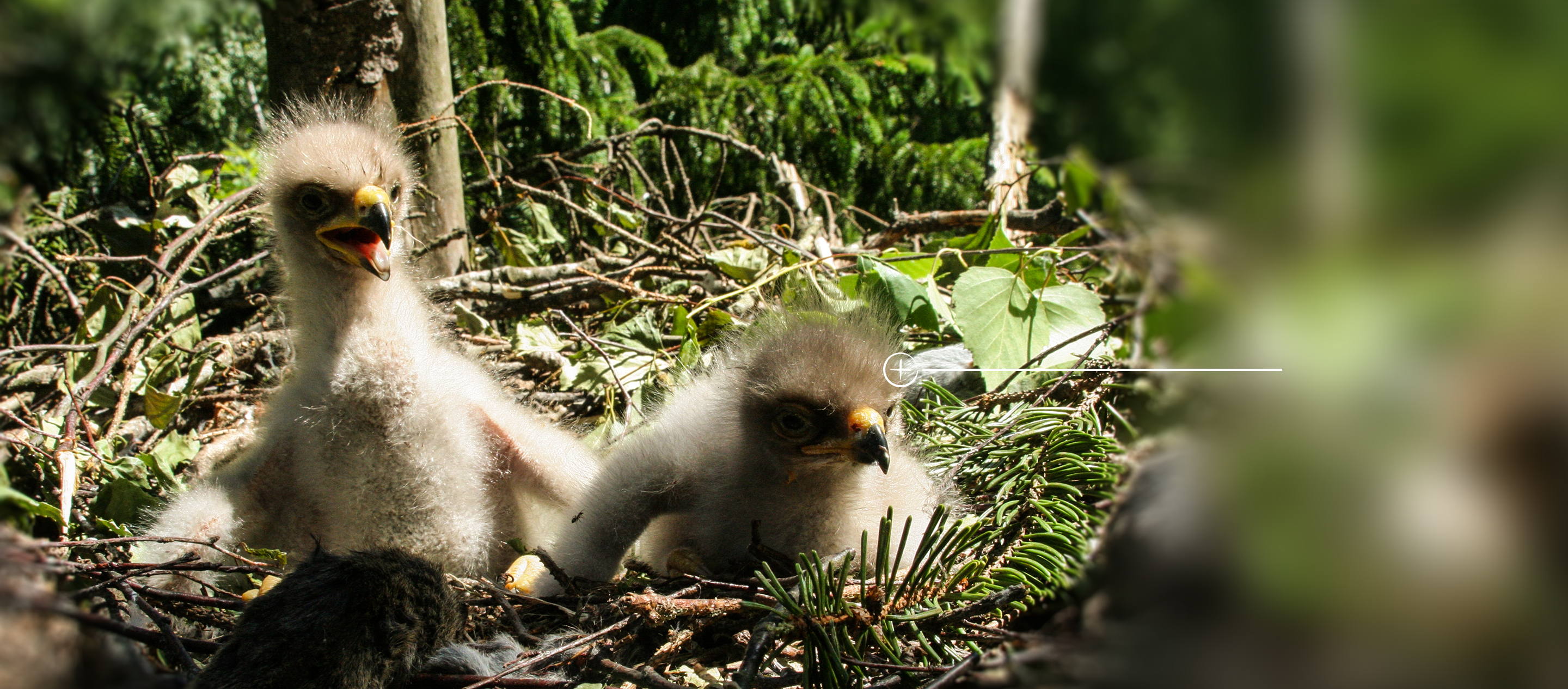
Life cycle
Until the end of the summer lesser spotted eagle usually sticks around its nest area and takes care of the offspring, but at the beginning of september starts it’s long way to wintering grounds in Africa. The trip usually is around 11 000 kilometers. The destination -- Eastern part of Africa. Latvia welcomes back lesser spotted eagles in the beginning of April when they return to seek the old nests. The highest breeding density of lesser spotted eagles ever registered in world is in nature park “Kuja” in Latvia where it reached 33 pairs per 100 km2.
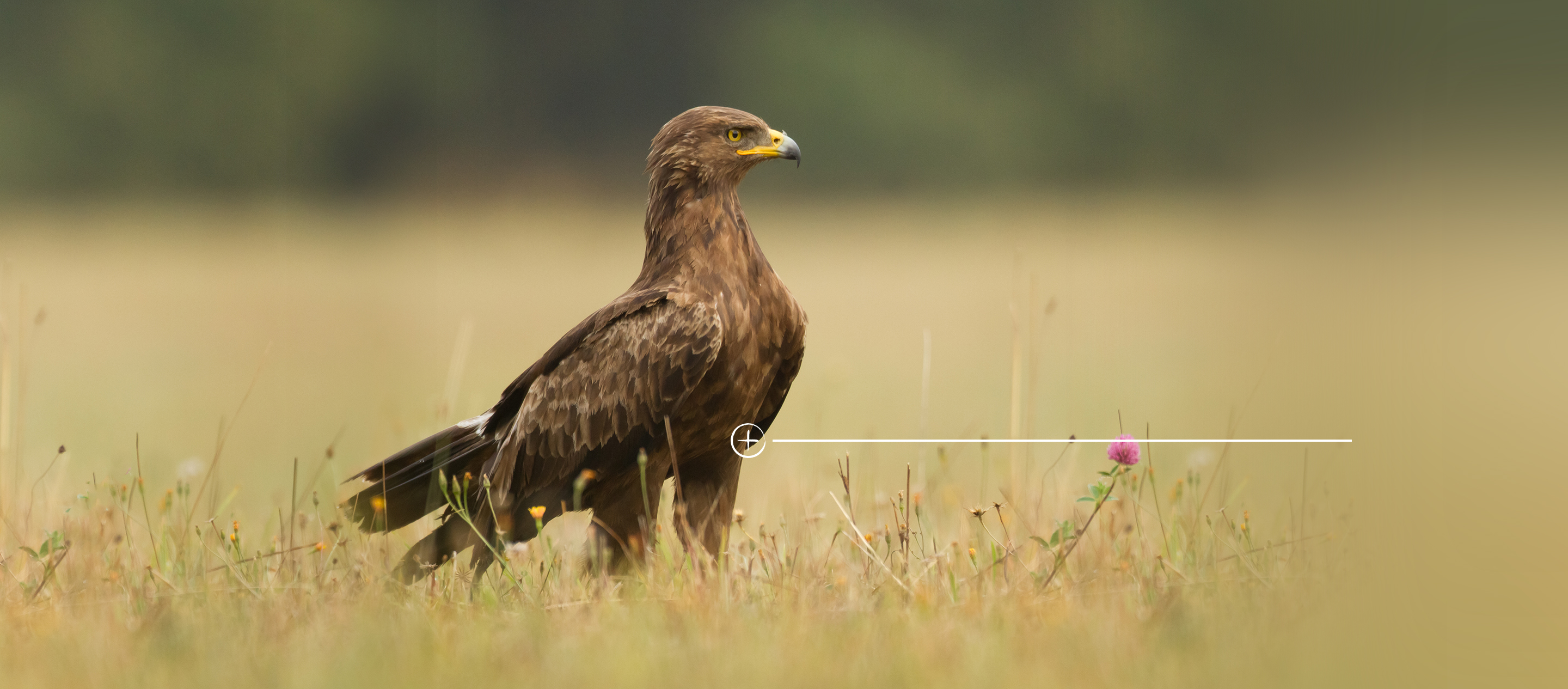
Conservation
Latvia is home for almost a half of all European Union lesser spotted eagles and one fifth of the world population. It is estimated that around 4 thousand pairs breed in Latvia. However, since the beginning of 21st century the population has decreased almost by 15%. Therefore Latvia is responsible for protection of lesser spotted eagle not only in national level, but also on European and even global level.
The main threats to lesser spotted eagle in Latvia are intensive farming and intensive forestry. The large and homogenous monoculture fields endanger the foraging sites and the forestry changes the natural breeding habitat of lesser spotted eagle.
Main features
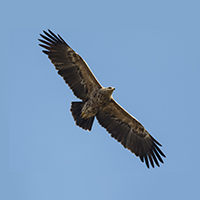
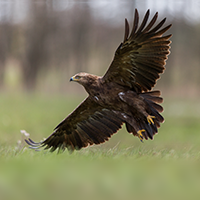
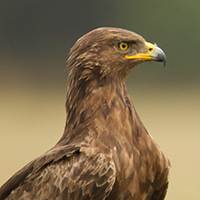
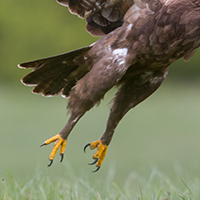
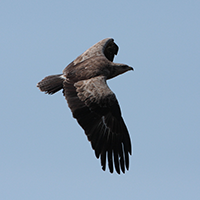

Why it is important to protect Lesser spotted eagle
 In Europe Lesser spotted eagle is threatened by habitat loss (deforestation, industrial farming practices ) and hunting on the migration routes.
In Europe Lesser spotted eagle is threatened by habitat loss (deforestation, industrial farming practices ) and hunting on the migration routes.
 No other country in EU is a home to so many lesser spotted eagles. If the population decreases in Latvia, it will affect the global population, thus we bear a responsibility to protect the species.
No other country in EU is a home to so many lesser spotted eagles. If the population decreases in Latvia, it will affect the global population, thus we bear a responsibility to protect the species.
 The population of lesser spotted eagles in Latvia has decreased by 10-15% since 2000.
The population of lesser spotted eagles in Latvia has decreased by 10-15% since 2000.
 Lesser spotted eagle is an indicator species that serves as a measure of the environmental conditions in given area.
Lesser spotted eagle is an indicator species that serves as a measure of the environmental conditions in given area.
 Lesser spotted eagles are breeding mostly in mature forests, as younger trees are not stable enough to carry the weight of the nests. Therefore it is important to preserve the old growth forests.
Lesser spotted eagles are breeding mostly in mature forests, as younger trees are not stable enough to carry the weight of the nests. Therefore it is important to preserve the old growth forests.
 Lesser spotted eagle is affected by intensive farming and intensive forestry that decreases the habitats suitable for the species.
Lesser spotted eagle is affected by intensive farming and intensive forestry that decreases the habitats suitable for the species.
 If the farming and forestry is lesser spotted eagle friendly, it is beneficial also for other plant and animal species and biological diversity in general.
If the farming and forestry is lesser spotted eagle friendly, it is beneficial also for other plant and animal species and biological diversity in general.
 Latvia is an important region for research of lesser spotted eagle - we provide valuable and globally significant information about the species.
Latvia is an important region for research of lesser spotted eagle - we provide valuable and globally significant information about the species.
 Latvia can be proud of lesser spotted eagle - we are a good place for this special and beautiful bird.
Latvia can be proud of lesser spotted eagle - we are a good place for this special and beautiful bird.
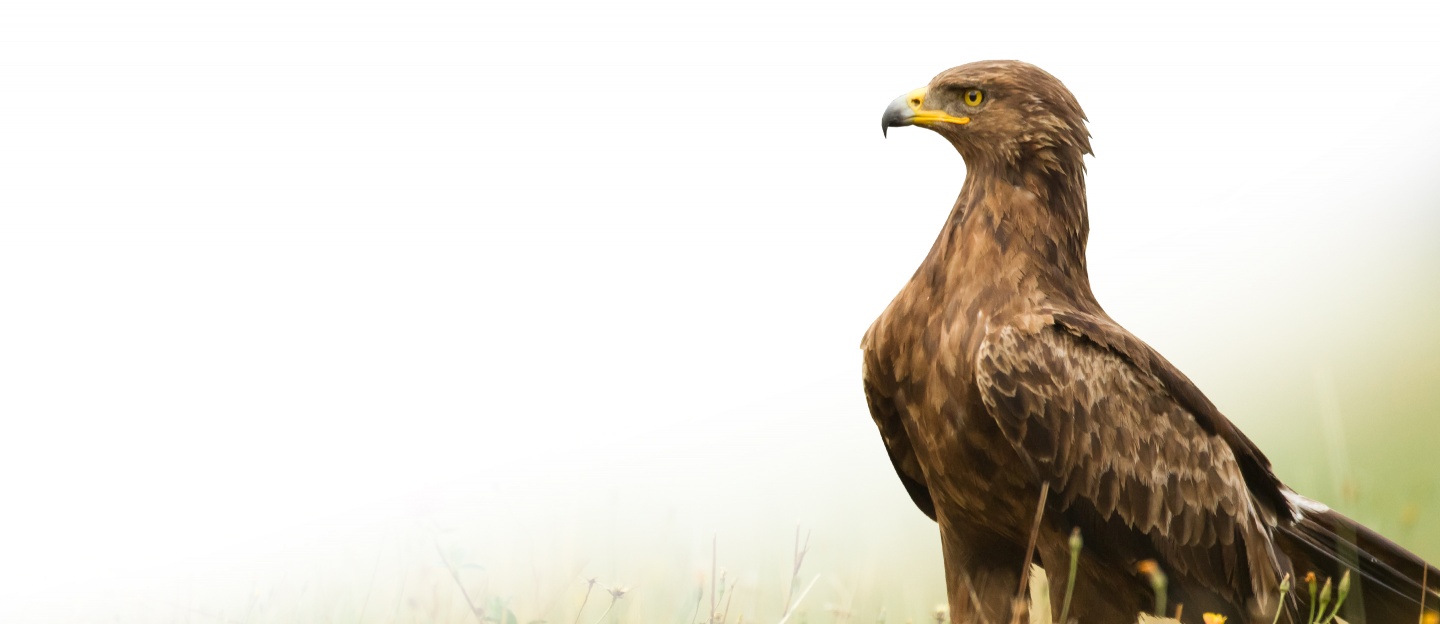
Live stream
What is the life of lesser spotted eagle like? What does it eat? How does it behave while nesting? Webcams are a tool that allows to follow the life of birds very closely. The obtained information can be useful for researchers in order to understand better the behaviour and habit of birds.
Therefore we have installed two webcams at lesser spotted eagle nests in Latvia. The first broadcasting season was in 2018.
One of the nests is situated in the western end of Zemgale. It was found in 2018.
The nest is built in a spruce at a height of 17 metres, on a stable three-pronged branch. In terms of location, it can be assessed as a typical Lesser Spotted Eagle's nest – about half of all Lesser Spotted Eagle's nests in Latvia are located in spruces, and a large part of them is built in the places, where the branches have formed several new tops at the trunk fracture. Judging by the size of the nest and the condition of the material, the nest is at least five years old.
In 2019, the nest delighted the audience with a harmonious nesting – a couple of eagles, Anna and Andris, raised one nestling, who grew calmly, in conditions of abundance of food and fledged successfully.
The other live Lesser Spotted Eagle's nest in Zemgale has been known since July 2017, when one young bird was found there. It is built in a birch at a height of about 20 metres. Judging by the material of the nest, it is at least five years old (the lower parts are already partially split).
The online camera system at this location was installed in the spring of 2018. Later, during the breeding season, a couple of Lesser Spotted Eagles stayed in the nest, but the breeding did not start. In 2019, breeding was started, the female laid one egg, but it did not hatch.
The operation of the live camera at the Lesser Spotted Eagle’s nest is provided by the Latvian Fund for Nature within the project "Ensuring the Protection of the Lesser Spotted Eagle in Latvia" (LIFE AQPOM), financially supported by the European Commission's LIFE+ program and co-financed by the Latvian Environmental Protection Fund.
In 2020 the broadcasting was resumed.


 Report a nest
Report a nest 








